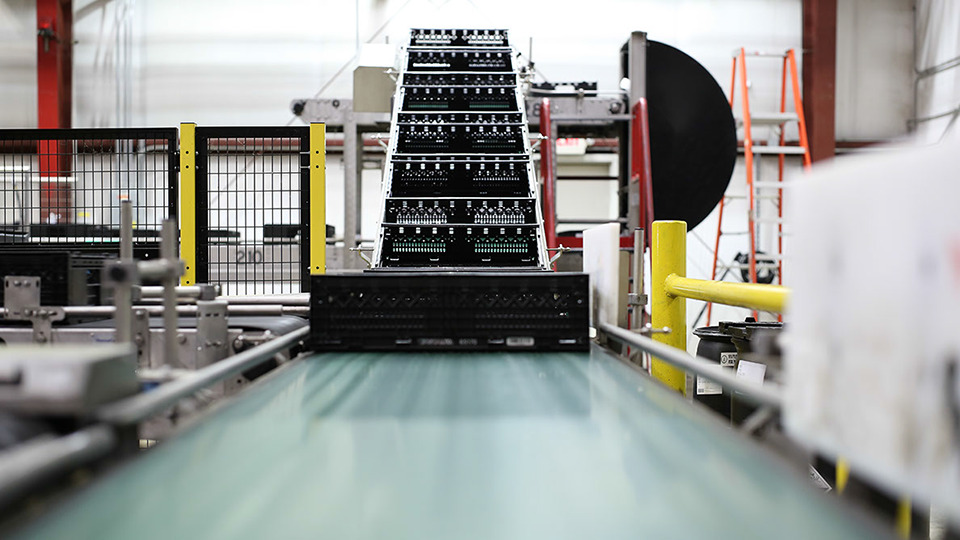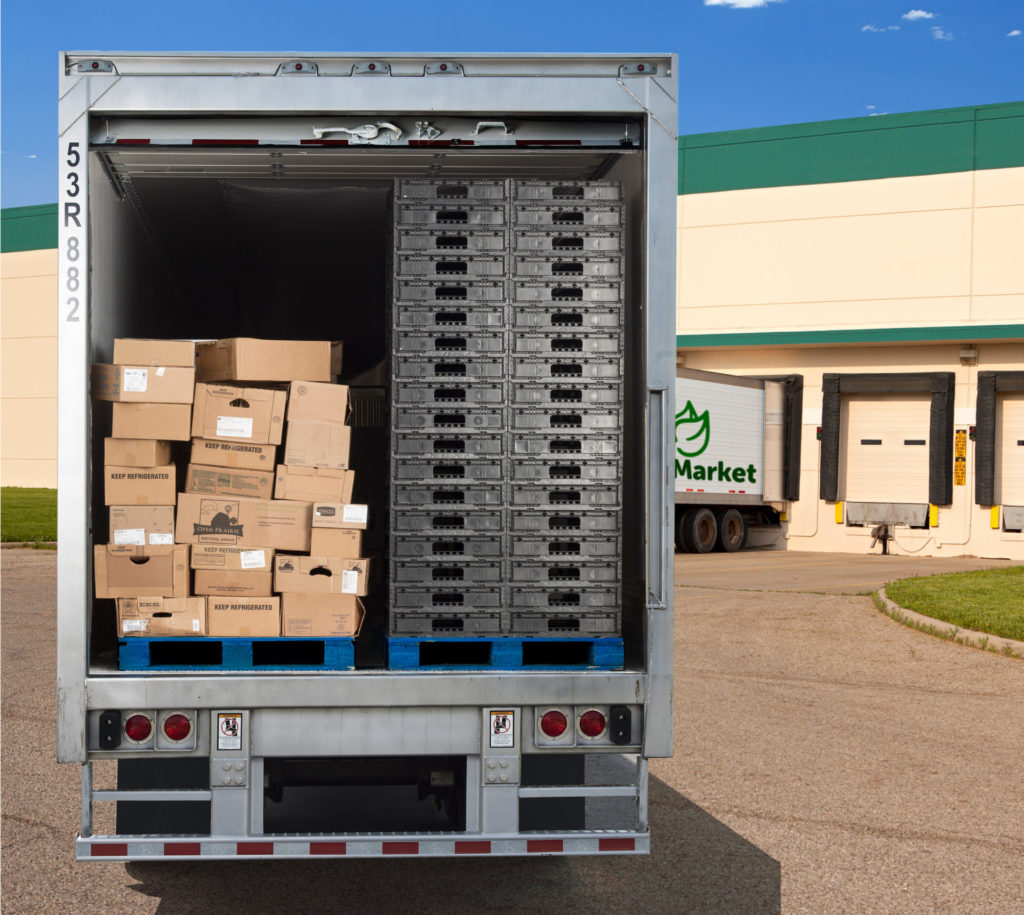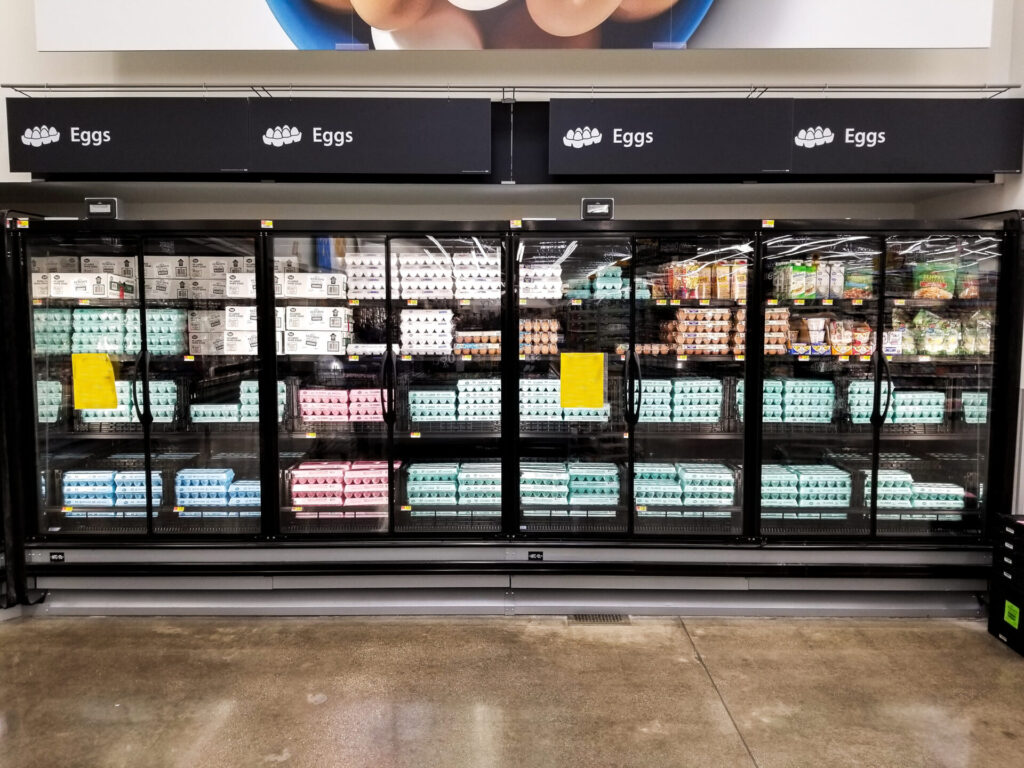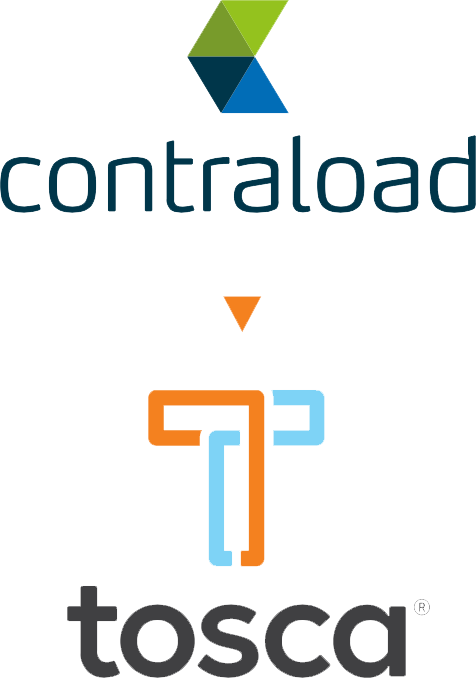Reusable plastic crates 101: get to know the sustainability powerhouse that makes food move
Whether you are considering switching to reusable plastic crates (RPCs) from corrugated, or you are already familiar with RPC crates, it is never a bad time to get a clear picture of one of the supply chain’s most important tools.
There are four things that matter when it comes to ensuring the success of a supply chain:
- Do my products reach their destination?
- Are my products maintaining their quality?
- Are they getting there efficiently and on time?
- Is my process cost-effective?
It is as simple as that, so it might surprise you to learn that switching out one of the most basic elements of your supply chain, its packaging, could be the difference to take your supply chain to the next level.
In this article we answer common questions about RPCs and offer explanations for why they are gaining so much popularity in today’s supply chain.
We will cover:
What are Reusable plastic crates?
What are the benefits of RPCs?
Are plastic crates better than corrugated boxes?
Are plastic crates heavy-duty enough to handle my supply chain?
Are plastic crates recyclable?
What kinds of companies are using plastic crates and why?
Is now a good time to switch to reusable plastic crates?
What are reusable plastic crates?
Reusable plastic crates are any vessel or container used to package and safely transport goods, assuming of course, that they are made of plastic. They fulfill the job that corrugated boxes and wood crates have held in supply chains for over 100 years, but with greater efficiency and sustainability.
Plastic crates exploded in popularity in 1991 when Germany made supply chain sustainability history by requiring businesses to separate and recycle 80 to 90 percent of traditional packaging materials to keep them out of landfills.
Plastic crate varieties include:
- Foldable plastic crates
- Nestable plastic crates
- Rigid crates
- Single use plastic crates
Sturdy wood crates also exist in the market, however, they are rare, dated, and cause as many problems as they solve. Many of the reasons wood pallets are inferior to plastic pallet alternatives hold true for wood crates as well. They are simply a more inefficient and unsanitary way to transport goods.
What are the benefits of RPCs?
Reusable plastic crates provide the following benefits:
- Eliminating needless supply chain waste: including packaging, product, labor, and transportation waste
- Efficiently stacking for better cube utilization, filling trucks and improving pallet density
- Reducing shrink by better protecting the products they carry
- Preventing contamination with their hygienic, washable material
- In the case of retail display crates, RPCs reduce the damage and labor costs of handling between box and shelf
- Reducing labor hours spent cleaning up messes caused by box failures or bailing empty corrugated
- Eliminating the damage and contamination caused by purge
- Durable and sturdy enough to handle the rigors of the supply chain without breaking down in transit
Beyond the value of the products themselves, RPCs enable efficient utilization systems such as pooling or renting. Pooled reusable products benefit the environment by supporting a strong circular economy, reducing the effect of cost and environmentally expensive return journeys, and saving users from the upfront costs of owning the reusable assets themselves.
Are plastic crates clean?
Yes. Most RPCs used in the food industry are made of high-quality, food-grade polypropylene, a type of plastic that is impermeable, washable, and able to withstand penetration of bacteria or fungus. When paired with the right washing and food safety practices, these crates can be used and washed hundreds of times without the risk of an incident.
A strong wash cycle is designed to maximize food safety by minimizing the risk of biological, chemical or physical hazards. It should be intensely precise and includes carefully monitored chemical usage, water pressure and temperatures. When it comes to food safety, it is important to work with suppliers you trust, especially when considering the risk of contamination. Here are some tips for choosing the right supply chain partner.

Are RPC crates better than corrugated boxes?
Corrugated cardboard has dominated packaging in supply chains for nearly a century, and in many ways the single-use material still controls most of the packaging market. However, the innovation RPCs provide upset the packaging market, bringing many advantages over corrugated to the table.
The advantages of RPCs over Corrugated:
1. Better hygiene
Unlike corrugated cardboard, reusable plastic crates do not break down into dust that can contaminate products or generate messes in facilities. They are also impermeable, preventing leaks that can contaminate other boxes of otherwise sellable products.
2. Better Cube Utilization
Sturdy and stackable, RPCs feature a base that nests into the top of other crates to prevent containers from slipping off stacks. The crates are significantly stronger than corrugated, capable of bearing much more weight. RPCs also stack higher and can fill trucks and small warehouse spaces fuller. The limited size options (measured to neatly fit four on a pallet, five on a pallet, six on a pallet, or ten on a pallet) means that retail teams benefit from neater stack configurations, and are troubled less by the many size configurations corrugated boxes can come in.

3. More Protective of Contents
The strong walls of RPCs do more than support strong stacks. They also ensure that the products inside are protected from any crushing that can come from the stack above or knocks and mishaps that are bound to happen in the miles of transit from source to store floor. In fact, it is estimated that RPCs reduce product shrink by over 16%. In the case of egg RPCs, where damage to product is a major pain point, RPCs reduce shrink by 50%.
4. More Sustainable
Did you know that only 68% of cardboard and paper that is sent to be recycled in the United States makes it through the recycling process? This means that the remaining 32% ends up in landfills after only one use. EPS foam is even worse. With reusable plastic crates, reuse is guaranteed. In fact, most RPCs carry products through the supply chain hundreds of times in their lifetime, each use eliminating a single-use box that never needed to be created (or thrown away).
5. Better transition from transport to display
Beyond their exceptional capability as transport vessels, many types of RPCs are also excellent display containers. When used for both purposes, RPCs save the store workers the time of unpacking while also preventing the inevitable damage to products that comes from more handling. In the case of our case ready meat RPCs this can mean a 25% reduction in labor costs.
6. Eliminates the need for waste management such as bailing and breaking down boxes
In the US, where corrugated is used for nearly every package that is shipped, the time spent managing empty boxes in stores can be a major pain point. Store labor must take time to flatten empty boxes after stocking product. Several times a day, store associates must take time to feed the empty corrugated into a bailer outside the store. By choosing a solution that eliminates these tasks, store associates are freed up to do other things.
Will reusable plastic crates last?
The heavy-duty design of reusable plastic crates ensures they can be used hundreds of times without breaking down. In the case of Tosca RPCs, the panels of each are individual items that fit into each other as parts. This design allows the crate to continue to circulate with a new panel if one part is irreparably damaged.
When used within a pooling system, crates are owned and maintained by the pooler, so customers only have to worry about the sturdiness of the crates for the one trip they make through their supply chain. There is no need for concern about whether or not a crate can handle the wear and tear of one trip.
Are plastic crates foldable?
Some plastic crates are foldable, yes. Directives in Europe have managed the use of single-use corrugated for years, limiting many food growers and suppliers to the use of reusable packaging only. The first reusable plastic crates were rigid, and many of this type still make revolutions through the supply chain today. However, newer, foldable versions grow much more common and offer users many advantages.
The advantages of foldable plastic crates are:
- More efficient return logistics
- Less space in storage and transit
- As much protection for the products they carry as their rigid counterparts
Are RPC crates sustainable?
With reusable plastic crates, reuse is guaranteed. Most RPCs are used hundreds of times in their lifetime, each use representing a single-use box that never entered the supply chain. Seafood RPCs are one of the only solid alternatives to EPS foam, offering seafood suppliers a way to make their supply chain more sustainable.
Additionally, plastic crates are fully recyclable when managed within the proper system. With Tosca, 100 percent of RPCs are recycled and ground up at end-of-life, much of which is used to create new crates.
What kinds of companies are using plastic crates and why?
RPCs are infinitely useful and have value in any high-volume supply chain. Due to their function as a washable reusable package, RPCs are most often used in food supply chains where volume, speed, and hygiene are all imperative requirements for packaging. Eggs, produce, meat, and poultry suppliers are all turning to RPCs to deliver products safely to their retail partners. However, beyond food, CPG, e-commerce, and textile industries are increasing usage of RPCs every year. No matter what products a business is looking to ship, foldable RPCs offer a more sustainable solution to rigid and corrugated alternatives.

How much do RPCs cost?
The total cost of introducing reusable plastic crates into your supply chain depends on several factors. The suitability of the crate for your purposes, how it will be used in the supply chain, whether it will be rented, purchased or pooled, its expected duration in transit and storage, and the number of rotations per year are some of the factors that determine the overall cost. Opting for a well-managed pooling solution is typically the most cost-effective choice, and requires zero capital expenditure. By working with an experienced pooler, your company can focus on its core capability, while your pooling partner focuses on reusable asset management and cleaning.
In a pooling system, the use of a reusable asset is charged on a per-use basis. Included in this cost is a complete reusable packaging solution. This includes the delivery of the pallets to your designated location, the retrieval of the pallets after use, the process of washing and maintaining the crates, as well as any account management, customer service, or technology used to utilize and track assets properly.
By partnering with a trusted pooling company such as Tosca, you can expect every piece of the process to be informed by specialized knowledge and efficiency. The value of a well-managed pooling system is a reduction to cost of your supply chain through transportation, labor, and shrink efficiencies.
Next steps for making the switch to reusable plastic crates
Tosca is the leading pooler of RPCs in North America, and there are good reasons for that. We know supply chains top to bottom and we have been a trusted partner for retailers and suppliers for the past 60 years, providing our expertise to help them achieve efficiency and sustainability. We operate 30 wash sites and nine global offices across North America and Europe, servicing more than 500M assets.
Beyond that, our customers love working with us. We make the process of switching easy, and guarantee that your supply chain will be changed for the better.
The world is looking to leaders like you to make sustainable decisions., and your leadership is expecting you to improve the bottom line. Chat with one of our experts to learn more about how you can do both with one switch.



